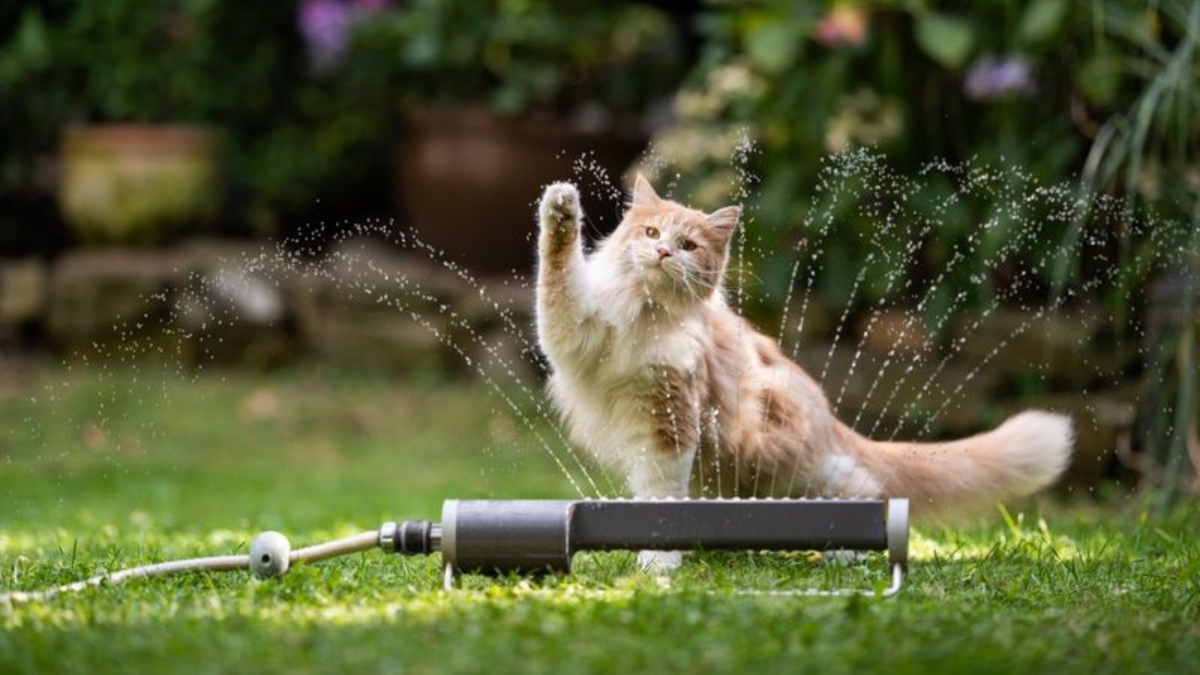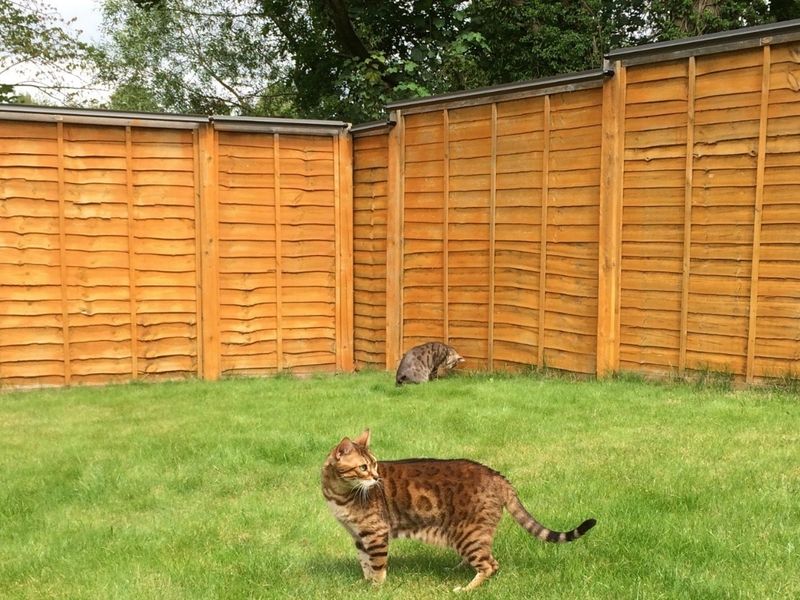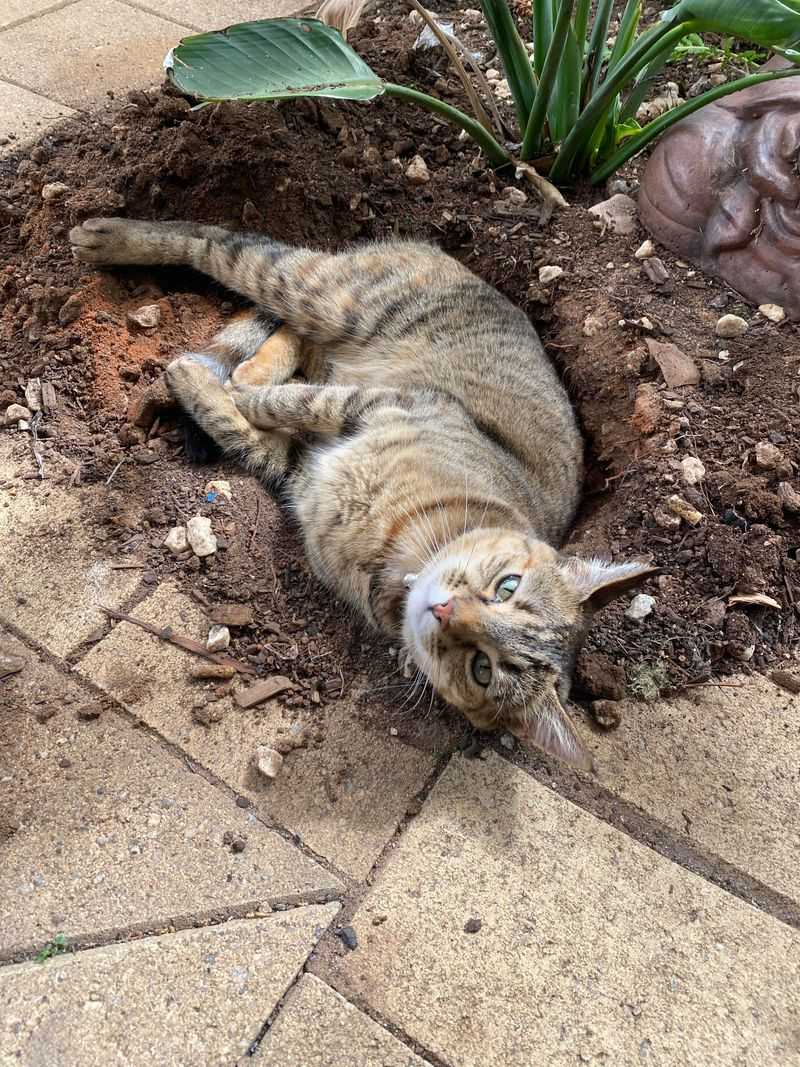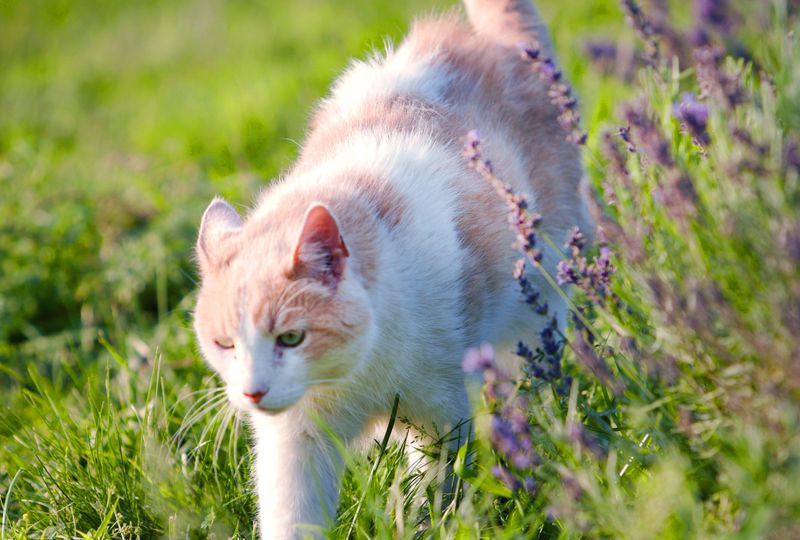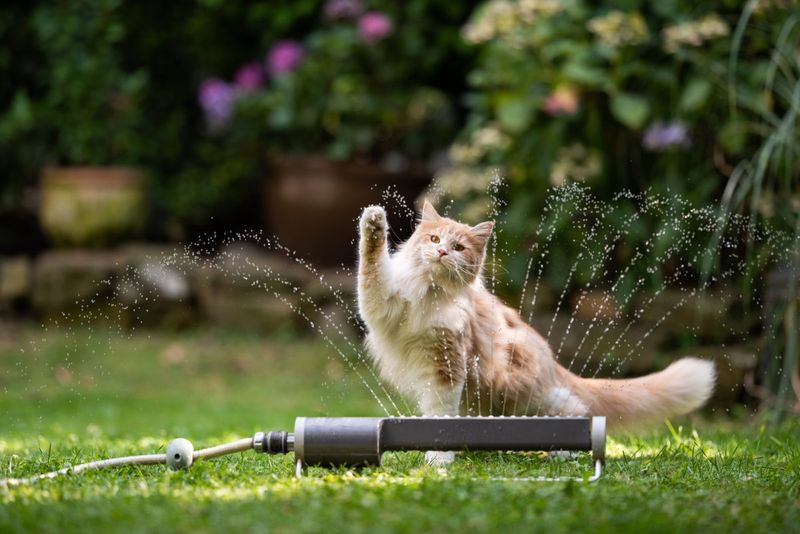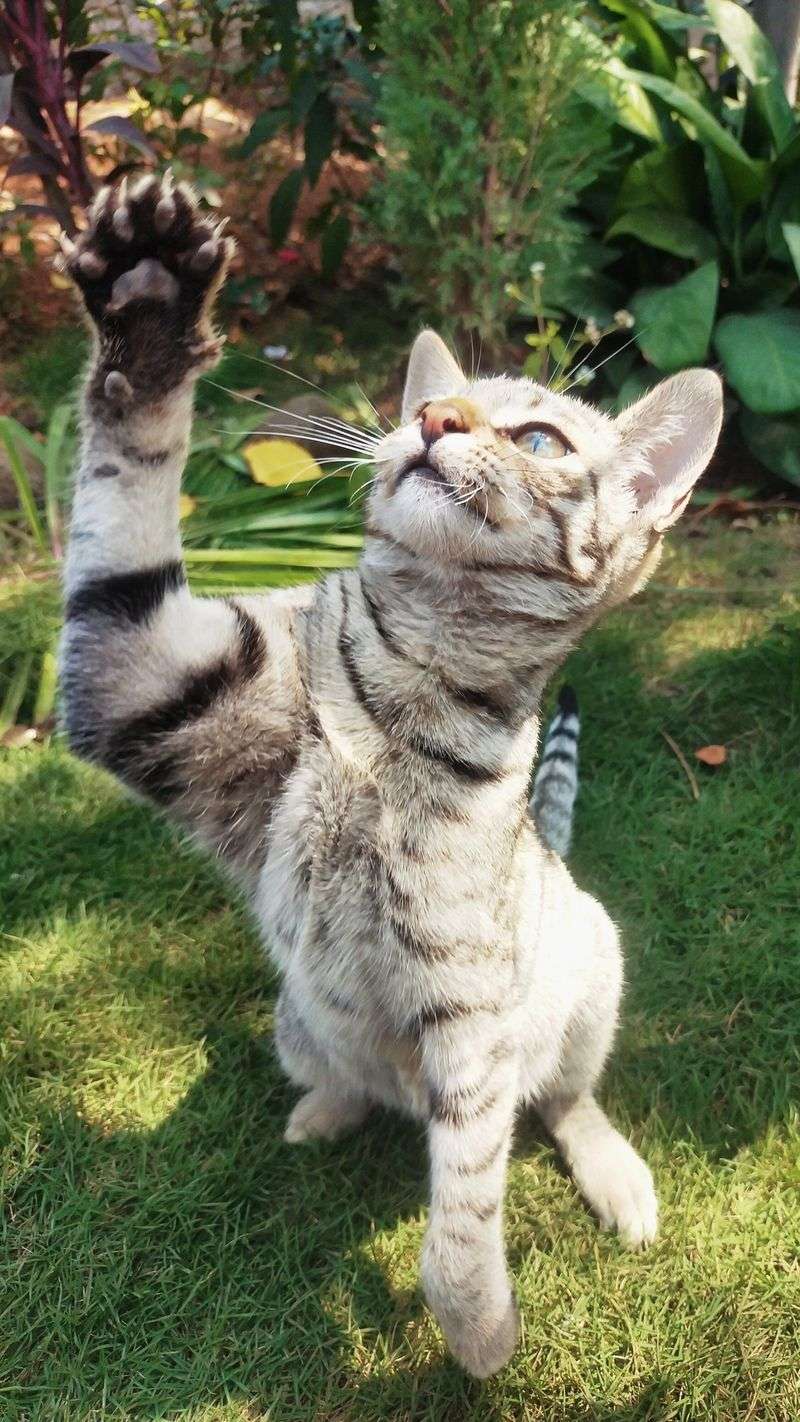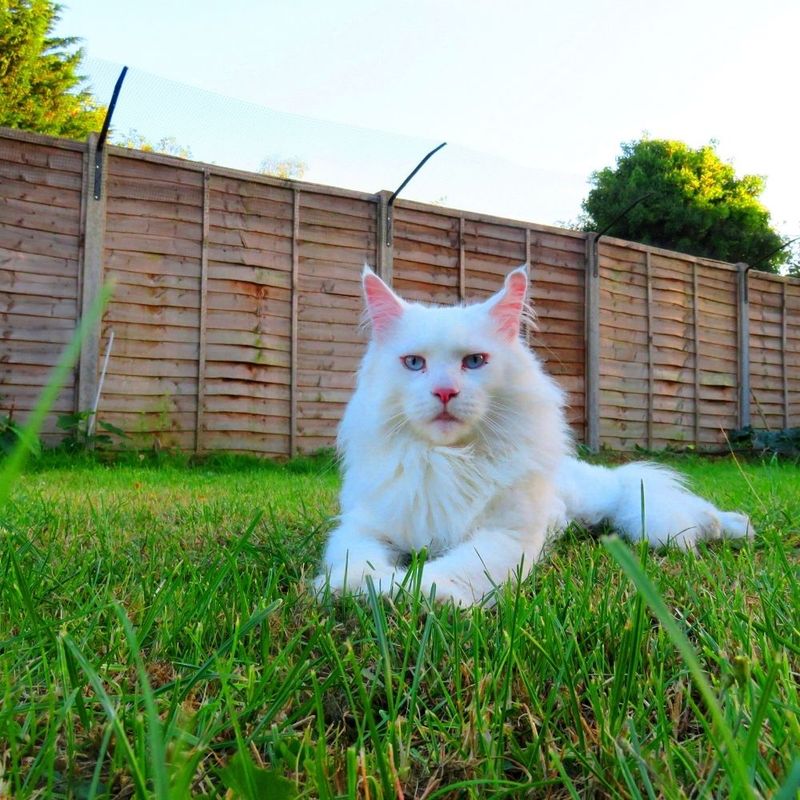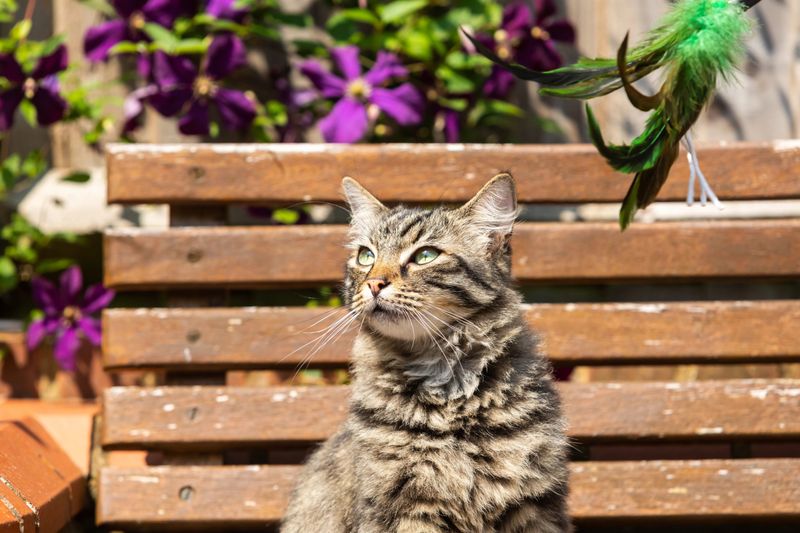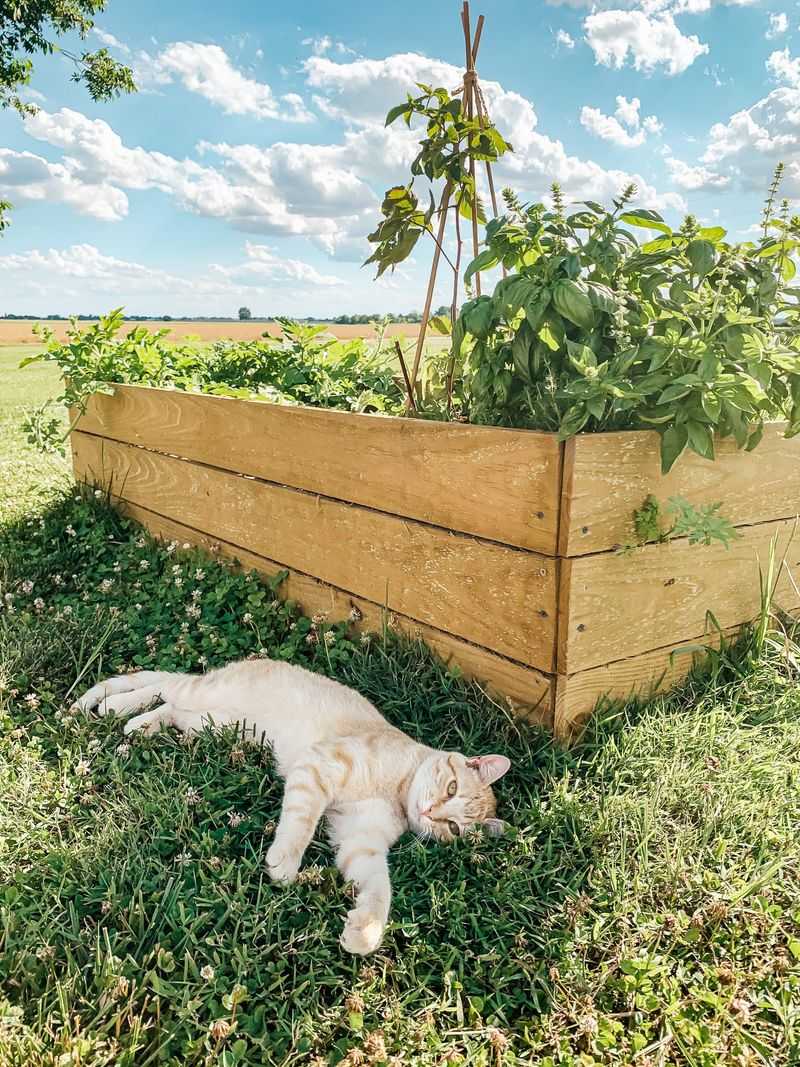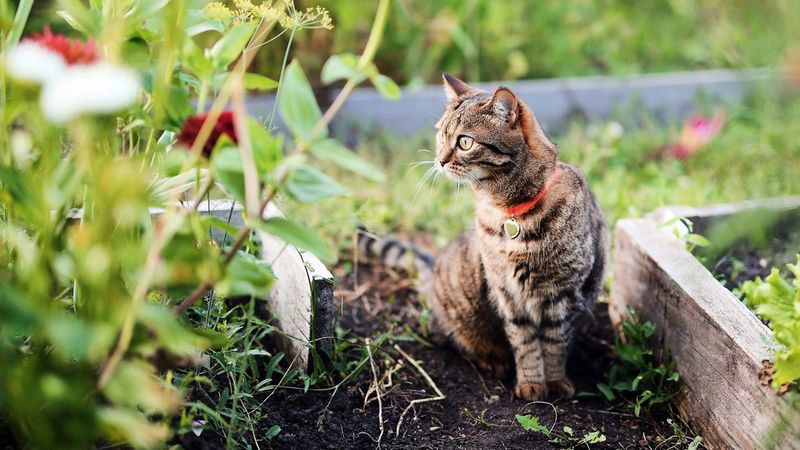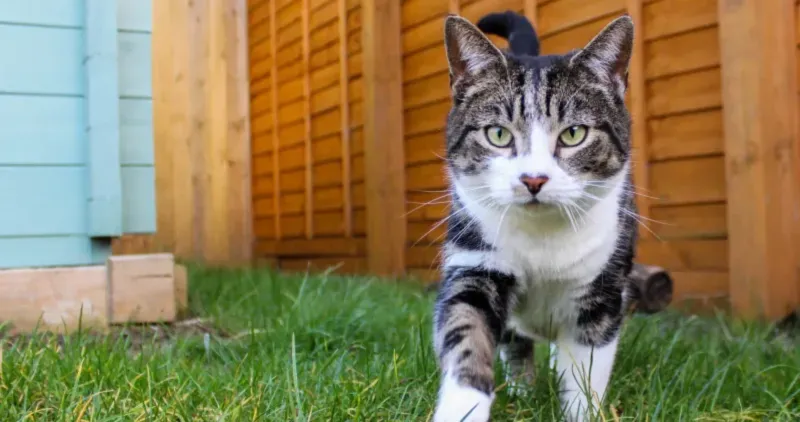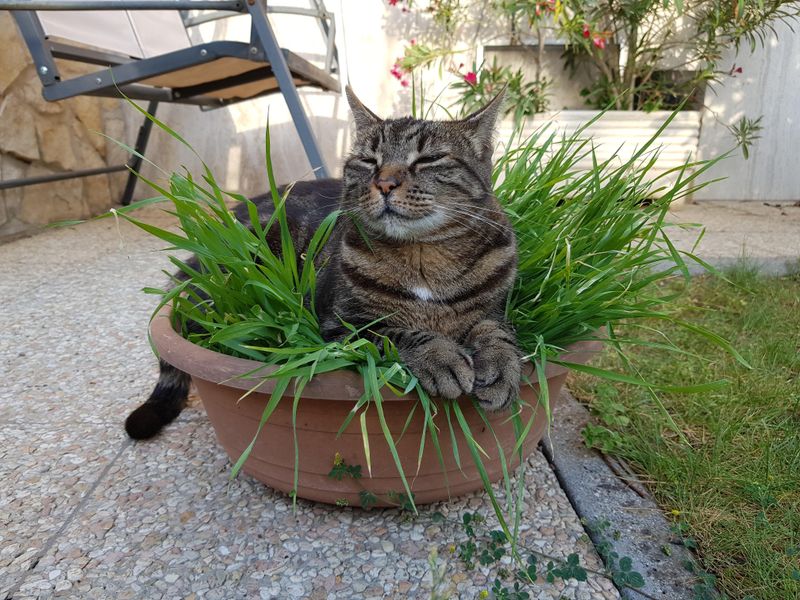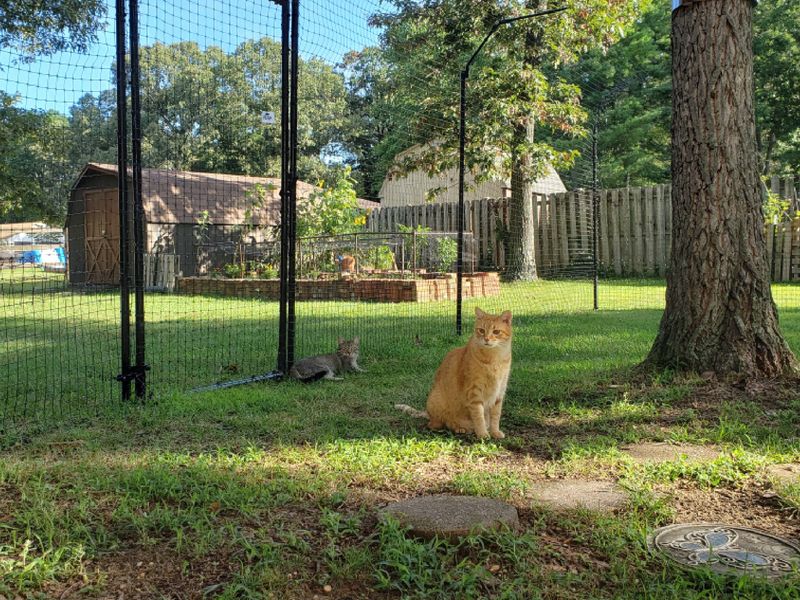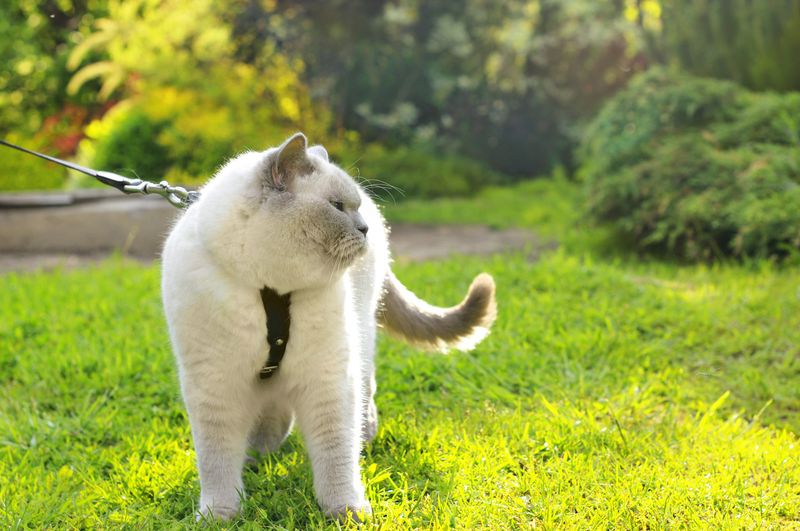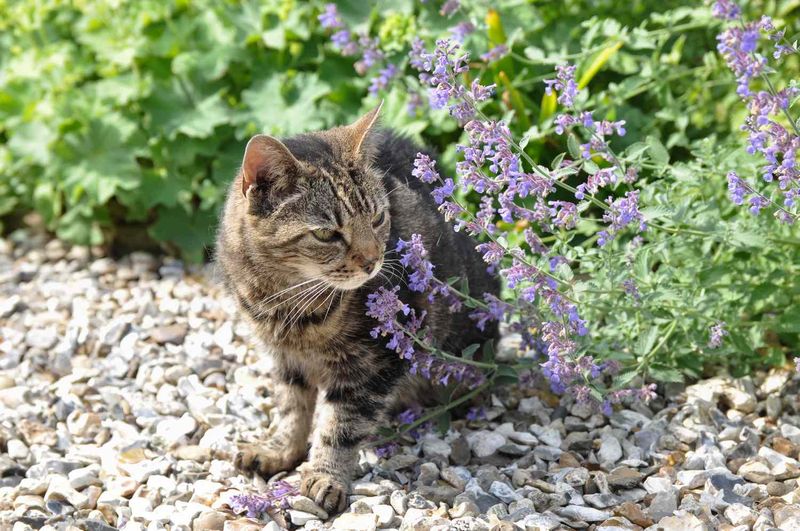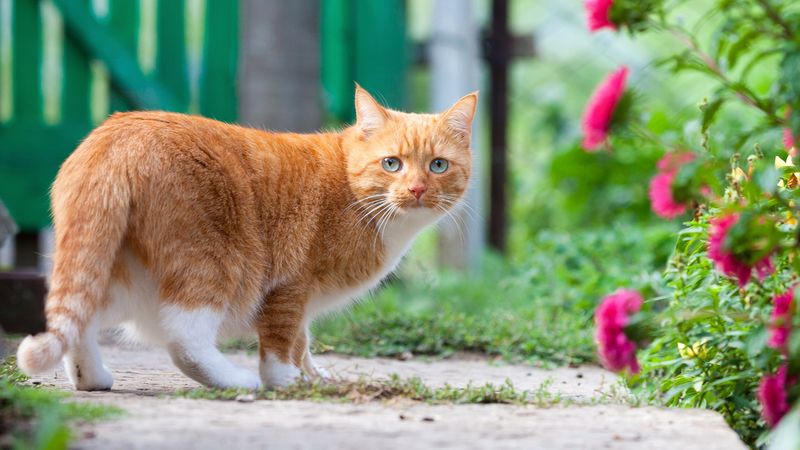📖 Table of Content:
- 1. Install Cat-Proof Fencing
- 2. Create a Designated Digging Area
- 3. Use Natural Deterrents
- 4. Introduce Motion-Activated Sprinklers
- 5. Provide Entertainment Options
- 6. Train with Consistent Commands
- 7. Install Plant Covers
- 8. Use Raised Garden Beds
- 9. Deploy Scent-Based Repellents
- 10. Create Cat-Friendly Paths
- 11. Add Cat Grass to Your Garden
- 12. Install Garden Barriers
- 13. Use Sound-Based Deterrents
- 14. Grow Catnip in a Controlled Area
- 15. Monitor and Adjust Strategies
A garden is an inviting paradise for cats, offering a world full of stimulating scents and fascinating sights. However, ensuring the safety of your cat while protecting the delicate plants can often feel like a balancing act. Without the proper precautions, your cat’s playful nature might quickly turn your garden into a mess.
Managing your cat’s curiosity while preserving the beauty of your outdoor space requires a few strategic steps. The goal is to create a secure area where your feline friend can explore freely without causing harm to plants or themselves. Whether through physical barriers or natural deterrents, there are many ways to keep both your cat and your garden safe.
By implementing the right techniques, it’s possible to design a space that accommodates the needs of both. These 15 methods will help ensure that your garden stays protected from feline mischief while keeping your cat engaged and content. Together, you and your pet can enjoy a peaceful, well-kept garden that benefits everyone.
1. Install Cat-Proof Fencing
Cat-proof fencing can be an effective first step in keeping your garden safe. These fences are designed to prevent cats from climbing over or squeezing through. By using a combination of height and flexibility, these barriers deter even the most determined feline climbers.
Ensure the fencing is high enough—at least six feet—and made of a material that won’t harm your cat. Consider adding an inward-facing overhang to further prevent escape attempts. This solution not only keeps your garden intact but also ensures your furry friend stays within safe boundaries.
2. Create a Designated Digging Area
Cats love to dig, so why not provide a designated area for them? By allocating a specific spot in your garden for digging, you can redirect your cat’s natural instincts away from precious plants.
Choose a location that is out of the way but easily accessible. Fill it with soft, sandy soil to make it inviting. Encouraging your cat to use this space can protect your garden beds from unwanted disruption while allowing your cat to indulge in their playful nature.
3. Use Natural Deterrents
A natural approach to deterring your cat from unwanted areas in the garden can be both effective and safe. Cats tend to avoid citrus, so scattering peels near plants can help keep them away. In addition, the lovely aromas of lavender and rosemary can prevent your cat from venturing into certain parts of the garden while benefiting the garden’s overall scent.
Using natural methods respects the environment while providing a safe solution that doesn’t compromise your garden’s aesthetics. This approach encourages peaceful coexistence between your garden and your feline friend.
4. Introduce Motion-Activated Sprinklers
For a tech-savvy approach to garden protection, motion-activated sprinklers are a great choice. These devices detect movement and spray a harmless burst of water to deter cats from entering the area. Cats typically avoid water, and this method is also effective for keeping other unwanted animals at bay.
By setting up these devices strategically, you can protect your garden zones while providing a non-invasive deterrent. Remember to position them carefully to avoid overwatering plants.
5. Provide Entertainment Options
Keeping your cat entertained can prevent them from causing mischief in the garden. Provide toys, climbing structures, or even a small water feature to capture their attention.
These distractions can redirect your cat’s energy towards play rather than digging or munching on plants. Ensure that these items are safe and durable, suitable for outdoor use. By offering engaging activities, you contribute to your cat’s physical and mental well-being, reducing the chances of them creating chaos in your cherished garden.
6. Train with Consistent Commands
Teaching your cat boundaries with consistent commands can help curb unwanted behavior in the garden. Utilize simple commands and hand signals to communicate, rewarding good behavior with treats.
Over time, your cat will learn to associate the garden with positive behaviors, reducing their inclination to engage in troublemaking activities. This training not only enhances garden safety but also strengthens your bond with your pet.
7. Install Plant Covers
Protective plant covers can shield your plants from a curious cat, preventing damage while allowing sunlight and rain to pass through. These covers come in various styles, including netting and cloches.
Choose a type that suits your garden’s aesthetics while providing the necessary protection. This measure prevents cats from digging or playing in areas they shouldn’t. By safeguarding vulnerable plants, you maintain the beauty and health of your garden, ensuring it remains a vibrant and thriving space.
8. Use Raised Garden Beds
To keep your delicate plants safe from your cat’s curiosity, raised garden beds are a great solution. The height of the beds prevents cats from easily reaching your plants, while also improving soil conditions for better growth. This method provides a practical and clear boundary for both your garden and your cat.
Incorporating raised beds can also add visual interest to your garden, creating a structured and aesthetically pleasing landscape.
9. Deploy Scent-Based Repellents
Protect your garden from feline interference with scent-based repellents. Ingredients such as peppermint and eucalyptus are naturally unappealing to cats, making them ideal for keeping them away from certain areas. A few strategic applications around your plants can prevent your cat from causing any damage.
This approach is environmentally friendly and safe for both your garden and your feline friend, offering a harmonious balance between deterrence and safety.
10. Create Cat-Friendly Paths
A well-designed cat-friendly path can offer your feline a safe route to explore without interfering with garden plants. Use materials like gravel or stepping stones to create an organized path for your cat to follow. This reduces the chances of your cat wandering into sensitive areas of your garden.
By providing a structured route, you can protect delicate garden areas while satisfying your cat’s curiosity, ensuring a safe and enjoyable environment for both your pet and your plants.
11. Add Cat Grass to Your Garden
Cat grass can be an excellent addition to your garden, offering a healthy distraction. Cats often chew on plants, but providing cat grass gives them a safe alternative. This grass is easy to grow and can be placed in a convenient spot in the garden. Encouraging your cat to munch on it can protect other plants from unwanted attention.
Not only does this solution keep your garden intact, but it also contributes to your cat’s dietary needs, making it a win-win for both parties.
12. Install Garden Barriers
Turn your garden into a cat-safe sanctuary with the help of low barriers that prevent unwanted feline exploration. Decorative fences or wire grids offer a practical yet elegant solution. These physical boundaries help ensure your plants stay intact, while your cat is still free to enjoy their outdoor space.
By using garden barriers, you protect valuable plants while maintaining an attractive layout. This practical solution helps ensure your garden remains a safe haven for both flora and your feline friend.
13. Use Sound-Based Deterrents
Harness the power of sound to protect your garden from feline exploration. Devices that emit high-pitched noises, inaudible to humans, can subtly discourage your cat from venturing into off-limits areas. This non-invasive method keeps your cat safe while maintaining the integrity of your plants.
Sound-based deterrents are an innovative solution that maintains garden tranquility while subtly managing your cat’s movements, creating a harmonious outdoor space.
14. Grow Catnip in a Controlled Area
Establish a catnip corner in your garden to allow your cat to enjoy their favorite herb while protecting your other plants. Cats are naturally drawn to catnip, and by containing it, you direct their attention to one area. Opt for a spot that’s accessible to your cat but away from more vulnerable garden beds.
This strategy not only keeps your garden organized but also provides your cat with a delightful sensory experience, enhancing their outdoor enjoyment.
15. Monitor and Adjust Strategies
Keep an eye on your cat’s behavior to ensure that the garden protection strategies continue to work effectively. Regular observations will help identify which deterrents are most successful and which may need to be updated. By staying proactive, you can quickly address any new issues that come up and maintain your garden’s peaceful atmosphere.
By staying engaged with both your garden and your cat’s behavior, you foster an environment where both can thrive, enjoying a balanced and harmonious coexistence.
